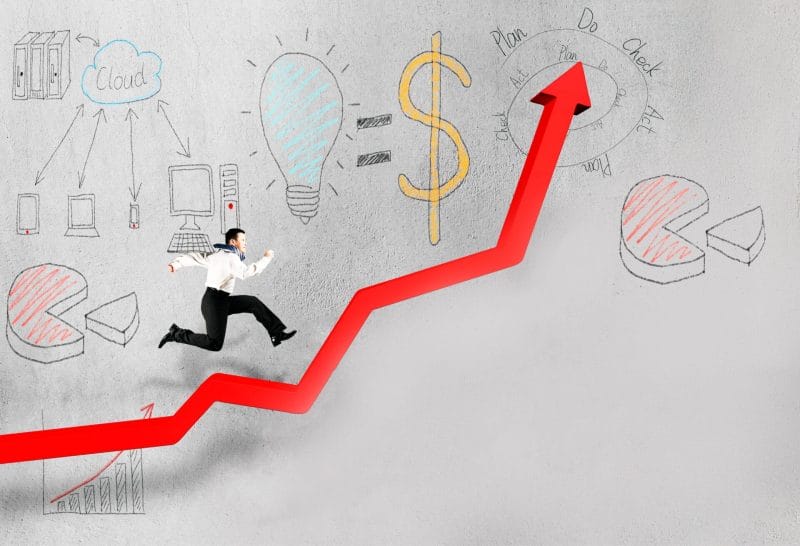Here’s a head-scratcher: A decade ago, the most pressing issue facing chief information officers (CIOs) at big tech buyers companies was the “cloud imperative,” according to InformationWeek, a top business resource for corporate IT executives. By contrast, according to CompTIA, the world’s largest ICT trade association, just 1 in 10 IT channel companies at the time reported any involvement with selling or using cloud solutions.
Put bluntly, the nation’s providers of technology products and services were out of step with what customers prioritized most in 2010. No wonder a third of them have since disappeared from the landscape, according to market researchers like Jay McBain, principal analyst of channels, partnerships, and alliances at Forrester Research.
But what about those that remain? That’s a different and altogether better story.
Today’s ICT solution providers — think MSPs, VARs, systems integrators, consultants, and more — are not following customers into new technology worlds and market adjacencies but leading them. They have learned invaluable lessons over the last decade in key areas, including technology adoption, best practices, and customer experiences. In many instances, today’s ICT technology providers serve as their customers’ entire IT departments, responsible for everything, including employee onboarding, technology adoption, network administration, organizational defense, and, increasingly, business outcomes.
“It’s the golden age of the trusted IT advisor,” says Drew Lydecker, co-founder of Avant Communications, one of the channel’s fastest-growing technology enablement companies.
For perspective on why, let’s look back at the decade that was and ahead to the one that will be. For the sake of simplicity, we will zero in on three areas that changed business most: technology, economics, and culture.
Let’s start with that thing InformationWeek called the “cloud imperative.”
Technology 2010: The Cloud Imperative
When Starbucks introduced its Frappuccino-blended beverage drinks in 2010, customers lost their minds. They lost their minds again that same year when CEO Howard Schultz announced Starbucks would soon provide free Wi-Fi internet connectivity in its stores. The idea cemented something most working professionals now take for granted: ubiquitous connectivity.
In addition to ubiquitous connectivity, other tech conventions began to take root a decade ago. Take mobility, for example. By 2010, smartphones were in the hands of 430 million consumers and business professionals alike. By the middle of the decade, they were in the pockets and purses of more than 2 billion people, or roughly 1/3 of the world’s population at the time.
Cloud computing began to take off as well, replacing client-server computing. By 2016, revenue generated from public cloud computing was forecast to top $200 billion. At the time, the amount was roughly as much money as the annual revenues of IBM, HP, and Microsoft combined.
Cloud helped launch a number of other revolutionary changes. Take software as a service (SaaS). SaaS not only democratized technology by giving small companies access to technologies previously available to large enterprises only, but it also ushered in an era of self-service procurement for line-of-business professionals.
Along with virtualization and social media, cloud technology, mobility, and SaaS completely transformed business computing. By the end of the decade, it simply did not matter where your data, applications, and computing power were located, so long as they were readily available, verifiably secured, and legally compliant.
Economics 2010: Remotely Better By A Mile
By 2010, the “old” way of doing business in the ICT channel, which revolved around the resale of products, was in decline. Product margins? SPIFs? Rebates? They just weren’t propelling growth.
Those who clung to old financial realities found themselves struggling, according to Robin Robins, founder and CEO of the Technology Marketing Toolkit and publisher of MSP Success Magazine.
Since 2010, most technology providers have transitioned their revenue from product reselling and break/fix support to managed services and business consulting. It’s not been easy for many. To adjust, companies overhauled their sales teams, compensation models, and alliances. This included new finance partners. While accepting money from private equity seemed like an implausible idea 10 years ago, scores have done so since.
In addition to embracing new business models, smart tech providers have adopted more professional management tools to run their businesses. The embrace of IT management and monitoring technology, in particular, gave rise to the small, nimble, and trusted technology advisor. Armed with remote management and monitoring (RMM) technology and professional services automation (PSA) software, solution providers could dramatically improve customer support, talent utilization, and decision making. Within a mere few years, the economics of solutions delivery were completely transformed, according to Jim Lippie, general manager of Kaseya’s cloud computing business and the former CEO of Thrive Networks, a Boston-area MSP.
Lippie sold Thrive to Staples in 2012. Looking back, he recalls that MSPs had two big business opportunities at the time: backing up customer resources to the cloud and converting on-premise Microsoft Exchange servers to the Microsoft Business Productivity Online Suite (BPOS), the forerunner to Microsoft Office 365.
In the span of 18 months, beginning in 2010, Thrive honed its pitch and pricing around these opportunities. Almost every day thereafter, it signed a new customer, netting it an additional $60,000 per month in recurring revenue.
Culture 2010: From The Arab Spring To The Equifax Dumpster Fire
Remember Tunis 2011? It’s hard to believe that it’s been nearly a decade since the uprisings in North Africa and the Middle East. By the time the dust settled, Tunisia, Libya, Egypt, and Yemen had new governments. Egyptian strongman Hosni Mubarak had tanks, jet fighters, and thousands upon thousands of troops at his disposal, but he was no match for social media, which mobilized an entire nation against him in a matter of weeks.
While the decade started with most believing that digital technology was the answer to almost any problem, it didn’t end that way. From the rise of fake news to the growth in cybersecurity breaches, the perception of technology transformed dramatically between 2010 and 2020. The decade ended with government regulators, business professionals, and consumers grappling with an entirely new set of challenges relating to privacy, regulation, social responsibility, election manipulation, and, perhaps most importantly, data security.
In “The Decade Tech Lost Its Way,” published in December 2019, The New York Times summed up the 2010s this way: “When the decade began, tech meant promise — cars that could drive themselves, social networks that could take down dictators. It connected us in ways we could barely imagine. But somewhere along the way, the flaws of technology became abundantly clear.”
2020 Technology: A Clearer Perspective
In the next decade, “emerging” innovations will mature. Their use will redefine automation in ways not previously anticipated. At the forefront of these game changers will be artificial intelligence (AI), big data, 5G networking, and the “internet of things” (IoT). In addition, watch for edge computing, nanotechnology, autonomous vehicles, and blockchain to revolutionize how business is done.
Used in any number of combinations, these innovations will have a massive impact on how MSP customers will leverage, consume, and manage digital capabilities. Given the uncertainty surrounding these technologies, expect your customers to depend on you for greater technological insights. To accommodate new demands, MSPs will have to hire new talent, enter new markets, and/or partner with new organizations.
“In 2020, the hype around emerging tech remains high, but transformational breakthroughs will be achieved as the decade rolls on,” says Carolyn April, senior director of research and analysis at CompTIA.
Economics 2020: New Money, New Revenue
Since 2010, end customers have automated a significant portion of existing business processes. In the next decade, they will look to create new business value with digital automation.
Today, companies ranging from airlines to manufacturers to health care providers have taken baby steps toward digital transformation. Doing so has helped them develop new revenue streams, enter adjacent markets, and create new customer experiences. But this is only a fraction of what is to come. With some pluck and ingenuity, your MSP business could find itself at the heart of digital transformation.
This reality will have a profound impact on MSP finances and valuations.
Today, MSPs valuations, which are generally pegged to EBITDA, vary greatly. A $1 million MSP with a healthy $200,000 in EBITDA can realistically expect to command 5–6 times that in a sale. But a $20 million MSP with just half of that EBITDA as a percent of revenue can expect more thanks to its free cash flow, which can be used to retire debt more quickly.
Valuations will increase even more when MSPs develop repeatable digital transformation services.
Culture 2020: Security Is Your Future
In May 2010, Uber went live, ushering in a decade of disruption. The company’s business model and regulatory models were different. Instead of taxi commissions, Uber relied on customer ratings to monitor driver behavior.
While the results were mixed, the idea was utterly transformative. In time, countless other tech innovators followed in lodging, consumer services, communications, banking, and the like.
At the start of this new decade, however, government officials and industry regulators have said they will no longer sit idly by as industries get disrupted. What does this mean for technology providers? It means they will have to provide new and more advanced services to their customers, especially those that work in regulated industries. Instead of a threat, MSPs may discover this is one of their biggest opportunities ever. Selling compliance as a service (CaaS) seemed like a dream a few years ago. Now it’s a reality. As the decade unfolds, so will other business opportunities, according to Robins from the Technology Marketing Toolkit.
“A decade ago, I had my concerns whether this industry was going to be replaced by the likes of a Microsoft or Google that could theoretically sell you a laptop and all of the business services already baked in,” says Robins.
But then, cybersecurity attacks began to swarm small businesses. When they did, they provided MSPs with new business opportunities.
Here’s to the 2020s and the solution providers who are starting it in-step with customer needs instead of lagging behind, like they did a decade ago.















